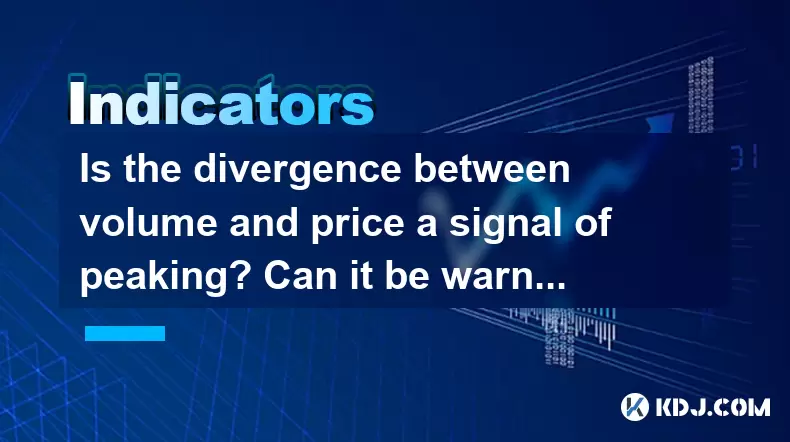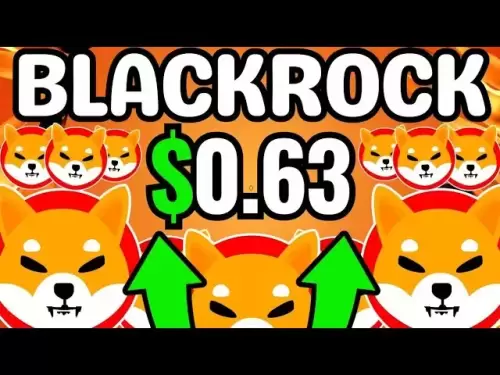-
 Bitcoin
Bitcoin $117900
-0.22% -
 Ethereum
Ethereum $3620
1.45% -
 XRP
XRP $3.392
-1.67% -
 Tether USDt
Tether USDt $1.001
-0.01% -
 BNB
BNB $741.5
1.66% -
 Solana
Solana $177.7
0.35% -
 USDC
USDC $0.9999
0.00% -
 Dogecoin
Dogecoin $0.2524
4.26% -
 TRON
TRON $0.3190
-1.74% -
 Cardano
Cardano $0.8331
1.49% -
 Hyperliquid
Hyperliquid $44.73
-0.94% -
 Stellar
Stellar $0.4609
-0.52% -
 Sui
Sui $3.844
2.54% -
 Chainlink
Chainlink $18.54
2.73% -
 Hedera
Hedera $0.2685
2.60% -
 Bitcoin Cash
Bitcoin Cash $522.6
1.91% -
 Avalanche
Avalanche $24.57
4.49% -
 Shiba Inu
Shiba Inu $0.00001508
2.57% -
 Litecoin
Litecoin $111.2
9.56% -
 UNUS SED LEO
UNUS SED LEO $8.989
0.15% -
 Toncoin
Toncoin $3.185
-0.08% -
 Polkadot
Polkadot $4.391
3.82% -
 Uniswap
Uniswap $10.34
3.56% -
 Monero
Monero $327.3
1.09% -
 Ethena USDe
Ethena USDe $1.001
-0.02% -
 Bitget Token
Bitget Token $4.953
1.19% -
 Pepe
Pepe $0.00001351
2.67% -
 Dai
Dai $1.000
0.01% -
 Aave
Aave $320.9
0.41% -
 Bittensor
Bittensor $415.9
1.00%
Is the divergence between volume and price a signal of peaking? Can it be warned in advance by combining with the moving average system?
Bearish volume divergence, confirmed by RSI and a bearish moving average crossover, signals a potential market peak in cryptocurrencies like Bitcoin.
Jun 05, 2025 at 09:35 pm

The divergence between volume and price is a critical concept in the cryptocurrency market, often used by traders to identify potential reversals or continuations in price trends. In this article, we will explore whether this divergence signals a market peak and how it can be combined with a moving average system to provide advance warnings.
Understanding Volume and Price Divergence
Volume and price divergence occurs when the price of a cryptocurrency moves in one direction, but the trading volume moves in the opposite direction. For instance, if the price of Bitcoin continues to rise, but the volume of trades decreases, this can be considered a bearish divergence. Conversely, if the price falls while the volume increases, it might be a bullish divergence.
In the context of a potential market peak, a bearish divergence is particularly relevant. When the price reaches new highs, but the volume fails to confirm these highs by staying flat or declining, it suggests that the upward momentum might be waning. This can be an early warning sign that the market might be reaching a peak and could soon experience a reversal.
Identifying Bearish Divergence in Cryptocurrencies
To identify bearish divergence in the cryptocurrency market, traders need to closely monitor both price and volume indicators. Here are some steps to follow:
- Select a time frame: Depending on your trading strategy, choose an appropriate time frame. For long-term trends, daily or weekly charts are useful, while intraday traders might prefer hourly or 4-hour charts.
- Plot the price and volume: Use a charting platform to plot the price movements and corresponding trading volumes. Most platforms offer these indicators by default.
- Look for discrepancies: Observe instances where the price reaches a new high, but the volume does not follow suit. This can be marked on the chart for easy reference.
- Confirm with other indicators: While volume divergence can be a powerful signal, it is beneficial to confirm it with other technical indicators such as RSI (Relative Strength Index) or MACD (Moving Average Convergence Divergence).
Combining Volume Divergence with Moving Averages
Moving averages are another crucial tool in a trader's arsenal. They help smooth out price data to identify the direction of the trend over a specified period. By combining volume divergence with a moving average system, traders can enhance their ability to predict potential market peaks.
Simple Moving Average (SMA) and Exponential Moving Average (EMA) are the most commonly used types of moving averages. The SMA gives equal weight to all prices in the period, while the EMA places more emphasis on recent prices, making it more responsive to new information.
To combine volume divergence with moving averages, follow these steps:
- Choose the right moving averages: Depending on your trading strategy, select appropriate moving averages. For instance, a 50-day SMA and a 200-day SMA are popular for long-term trends, while a 9-day EMA and a 21-day EMA can be used for shorter time frames.
- Plot the moving averages: Add the chosen moving averages to your price chart. These lines will help you visualize the trend and potential support or resistance levels.
- Monitor for crossovers: Pay attention to when the shorter-term moving average crosses above or below the longer-term moving average. A bearish crossover (shorter-term moving average crossing below the longer-term moving average) can reinforce a bearish volume divergence.
- Integrate volume divergence: When you identify a bearish volume divergence, check if it coincides with a bearish moving average crossover. This confluence of signals increases the likelihood of an impending peak.
Practical Example of Volume Divergence and Moving Averages
Let's consider a practical example using Bitcoin (BTC). Suppose the price of Bitcoin has been on an upward trend, reaching new highs. However, the trading volume has not kept pace and is showing signs of decline. At the same time, the 50-day SMA has just crossed below the 200-day SMA.
- Step 1: Identify the new price high and the corresponding volume. If the volume is lower than the previous peak, this indicates a bearish divergence.
- Step 2: Confirm the bearish divergence by checking other indicators like RSI. If the RSI is also showing a bearish divergence (e.g., lower highs while the price makes higher highs), it strengthens the signal.
- Step 3: Observe the moving averages. If the 50-day SMA has crossed below the 200-day SMA, this is a bearish crossover, indicating a potential trend reversal.
- Step 4: Combine the signals. The bearish volume divergence, confirmed by the RSI and reinforced by the bearish moving average crossover, suggests a high probability of an impending peak.
Limitations and Considerations
While combining volume divergence with moving averages can provide valuable insights, it is essential to be aware of the limitations and potential pitfalls:
- False signals: Not all divergences lead to immediate reversals. Sometimes, the market can continue its trend despite the divergence, leading to false signals.
- Lag in moving averages: Moving averages, especially the SMA, can lag behind the current price action, which might delay the signal.
- Market noise: In highly volatile markets, volume and price data can be noisy, making it challenging to identify clear divergences and crossovers.
To mitigate these risks, traders should use additional confirmation tools and maintain a disciplined approach to risk management. It is also crucial to backtest strategies using historical data to understand their effectiveness in different market conditions.
FAQs
Q: Can volume divergence be used effectively in all types of cryptocurrency markets?
A: Volume divergence can be applied across various types of cryptocurrency markets, but its effectiveness may vary. In highly liquid markets like Bitcoin and Ethereum, volume data is more reliable and can provide clearer signals. In less liquid markets, volume data might be more erratic, making it harder to identify true divergences.
Q: How can traders differentiate between a temporary pullback and a genuine peak signaled by volume divergence?
A: Differentiating between a temporary pullback and a genuine peak requires careful analysis of multiple factors. A genuine peak often comes with sustained lower volumes and is confirmed by other technical indicators like moving averages and RSI. Temporary pullbacks might show brief volume declines but are typically followed by renewed buying interest and higher volumes.
Q: Are there specific moving average combinations that work better for detecting peaks in cryptocurrency markets?
A: The effectiveness of moving average combinations can vary depending on the market and time frame. For long-term trends, the 50-day and 200-day SMAs are commonly used. For shorter time frames, combinations like the 9-day and 21-day EMAs can be more responsive. Traders should experiment with different combinations and backtest them to find what works best for their specific strategy.
Q: How can traders use volume divergence and moving averages in conjunction with other technical analysis tools?
A: Volume divergence and moving averages can be integrated with other technical analysis tools to enhance trading decisions. For instance, traders can use support and resistance levels to identify potential reversal points, Fibonacci retracement levels to gauge potential pullback targets, and candlestick patterns to confirm entry and exit points. Combining these tools provides a more comprehensive view of market conditions and increases the probability of successful trades.
Disclaimer:info@kdj.com
The information provided is not trading advice. kdj.com does not assume any responsibility for any investments made based on the information provided in this article. Cryptocurrencies are highly volatile and it is highly recommended that you invest with caution after thorough research!
If you believe that the content used on this website infringes your copyright, please contact us immediately (info@kdj.com) and we will delete it promptly.
- WLFI Token Trading Approved: From Trump Ties to Community Votes
- 2025-07-20 09:10:12
- CoinDCX's $44.2 Million Security Breach: A Wake-Up Call for Crypto Exchanges
- 2025-07-20 08:30:13
- Trump, WLFI, and Token Release: A New York Minute on Crypto
- 2025-07-20 08:30:13
- Ripple's RLUSD: The Bluechip Stablecoin Set to Disrupt the Market?
- 2025-07-20 08:50:11
- Bitcoin Price Action: Is Weakening Demand on the Horizon?
- 2025-07-20 08:50:11
- Ripple's RLUSD: Top-Ranked Stablecoin Shaking Up the Market
- 2025-07-20 08:55:12
Related knowledge

Advanced RSI strategies for crypto
Jul 13,2025 at 11:01am
Understanding the Basics of RSI in Cryptocurrency TradingThe Relative Strength Index (RSI) is a momentum oscillator used to measure the speed and chan...

Crypto RSI for day trading
Jul 12,2025 at 11:14am
Understanding RSI in the Context of Cryptocurrency TradingThe Relative Strength Index (RSI) is a momentum oscillator used to measure the speed and cha...

Crypto RSI for scalping
Jul 12,2025 at 11:00pm
Understanding RSI in the Context of Crypto TradingThe Relative Strength Index (RSI) is a momentum oscillator widely used by traders to measure the spe...

What does an RSI of 30 mean in crypto
Jul 15,2025 at 07:07pm
Understanding RSI in Cryptocurrency TradingRelative Strength Index (RSI) is a momentum oscillator widely used in cryptocurrency trading to measure the...

What does an RSI of 70 mean in crypto
Jul 13,2025 at 06:07pm
Understanding the RSI Indicator in Cryptocurrency TradingThe Relative Strength Index (RSI) is a widely used technical analysis tool that helps traders...

Does RSI work in a bear market for crypto
Jul 16,2025 at 01:36pm
Understanding RSI in Cryptocurrency TradingThe Relative Strength Index (RSI) is a momentum oscillator used by traders to measure the speed and change ...

Advanced RSI strategies for crypto
Jul 13,2025 at 11:01am
Understanding the Basics of RSI in Cryptocurrency TradingThe Relative Strength Index (RSI) is a momentum oscillator used to measure the speed and chan...

Crypto RSI for day trading
Jul 12,2025 at 11:14am
Understanding RSI in the Context of Cryptocurrency TradingThe Relative Strength Index (RSI) is a momentum oscillator used to measure the speed and cha...

Crypto RSI for scalping
Jul 12,2025 at 11:00pm
Understanding RSI in the Context of Crypto TradingThe Relative Strength Index (RSI) is a momentum oscillator widely used by traders to measure the spe...

What does an RSI of 30 mean in crypto
Jul 15,2025 at 07:07pm
Understanding RSI in Cryptocurrency TradingRelative Strength Index (RSI) is a momentum oscillator widely used in cryptocurrency trading to measure the...

What does an RSI of 70 mean in crypto
Jul 13,2025 at 06:07pm
Understanding the RSI Indicator in Cryptocurrency TradingThe Relative Strength Index (RSI) is a widely used technical analysis tool that helps traders...

Does RSI work in a bear market for crypto
Jul 16,2025 at 01:36pm
Understanding RSI in Cryptocurrency TradingThe Relative Strength Index (RSI) is a momentum oscillator used by traders to measure the speed and change ...
See all articles



























































